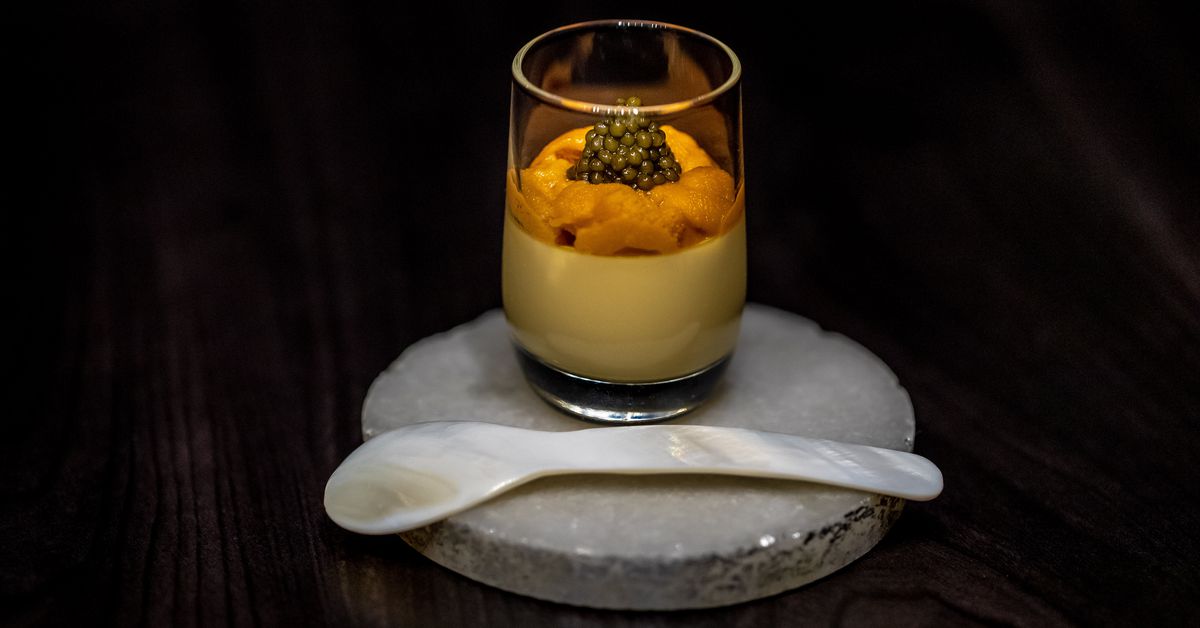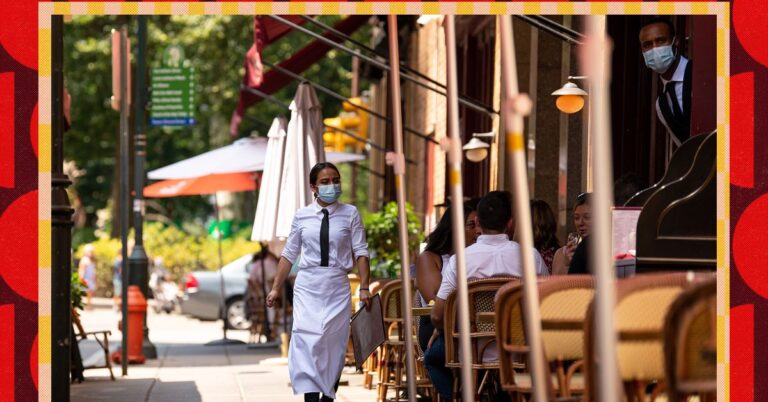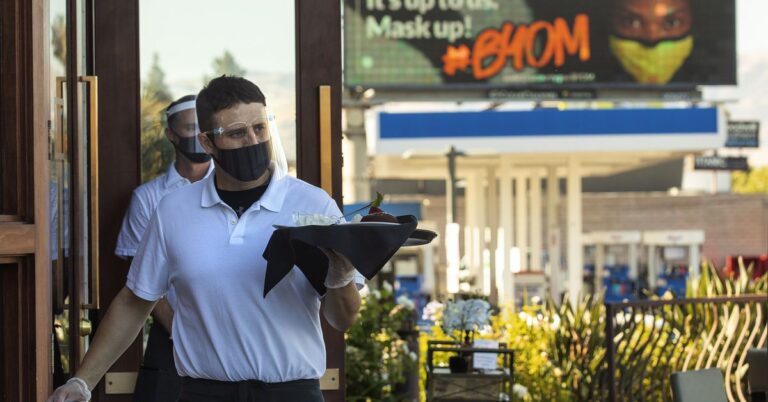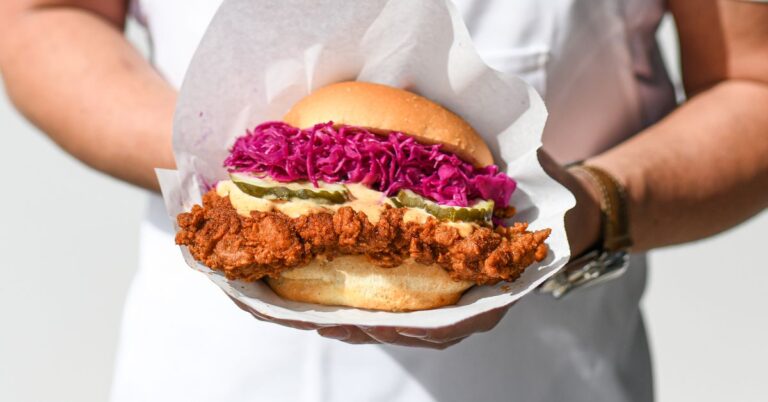Why $400 Sushi Menus Are the New Normal in NYC
The $1,000 sushi date, once a reasonably rare species in New York, has become increasingly common as a series of splashy openings and winter price hikes push Manhattan’s high-end Japanese scene further into the stratosphere — and out of the reach of everyday gourmands who save up for an occasional splurge.
Masa, the oligarch-friendly restaurant that traffics in ohmi beef and white truffle ice cream, was, for over a decade, the only local sushi spot where the price of dinner, after tax and tip, exceeded $400. Today, there are at least eight of these tiny venues: the hinoki room at Noz, Yoshino, Noz 17, Onodera, Shion 69 Leonard Street, Icca, and the relocated Noda. Order a few glasses sake and a meal for two will almost certainly hit $1,000 at the bulk of these establishments.
Restaurant operators who spoke with Eater attributed the newly elevated cost of dining out to a variety of factors, including global supply chain issues, an increasing number of omakase venues bidding for a fixed supply of wild seafood, and a growing class of wealthy and knowledgeable consumers with the means and desire to indulge.
These rising prices are also surely a product of savvy owners who are well attuned to what their competitors are charging, often tweaking things up by a few dollars when their peers do the same.
“The market ultimately is the biggest determinant of price in any industry,” said 69 Leonard owner Idan Elkon during a phone interview, who added that he used to run the pricing department at a telecommunications company. He recounted the example of a new sushi spot that “looked at the market” before deciding to charge $400. “They’re all looking to be within that range; some are a little higher; some are a little lower,” he said.
A flurry of sushi price hikes occurred around the month of December. Ginza Onodera near Bryant Park raised the cost of dinner by $50 to $450; supplements like Ezo-bafun sea urchin rolls ($45) can jack up the bill even higher.
Noz on the Upper East Side also announced a hike, moving things up by just a few dollars to $400 — that’s still $75 more than what I paid in late 2019 — to match the pricing at its newly opened Noz 17 in Chelsea. Noz also offers a cheaper $230 menu in a separate “ash” room, while Onodera offers more affordable lunch menus starting at $100. Prices at both restaurants are inclusive of service.
Shion 69 Leonard Street had already beefed up its prices earlier in 2021, upon reopening and rebranding following an eight-month hiatus. Chef Shion Uino, late of Amane in Midtown East, took over the reins from Derek Wilcox, who had split the menu between kaiseki and nigiri. Under Uino, the sushi-focused menu jumped up by $58 per person to $350, or $420 after automatic gratuity. The pricing uptick followed an overhaul of the dining room, which owner Elkon called a “significant” capital investment. The kitchen also pivoted to focus on imported Japanese fish varieties.
Still, others charge more. Chef Tadashi Yoshida opened Yoshino on the Bowery in September, offering a caviar and white truffle-stuffed meal that, after tax and tip, runs nearly $500, while a dinner at the omakase room at Icca in Tribeca costs $522.
Joshua Foulquier, who owns the growing Noz empire with his brother, David, said that it would be “foolish” for newer venues not to consider the pricing landscape when entering the high-end omakase market; he looked at what both Masa and Onodera were charging when he opened in 2018, so as not to come in higher than established competitors — and because he wasn’t yet aware what it would truly cost to run his own sushi spot.
Now, Foulquier says he tweaks his pricing not based on the market but rather what works for his business.
The restaurateur attributes Noz’s higher prices to rising labor costs — at least 30 percent higher for new employees — as well as to air cargo prices, which have played a role in the larger global supply chain crisis. Foulquier, who runs a fish import/export business for his company, says pre-COVID his shipping rates were about 500 yen per kilogram (roughly $4.30), with a minimum of 100 kilos. Now, those fees have more than doubled to over 1,300 yen, with a new minimum of 250 kilos.
Ginza Onodera, perhaps the world’s most expensive mini-chain of sushi restaurants with locations in Shanghai, Hawaii, Tokyo, and Los Angeles, partly attributed its own increases to spending more on air freight shipping — incurred because some of their ingredients are “stuck in LA docks,” according to a spokesperson for the group. The restaurant also said that the price of goods imported from Japan, where Ondera gets its rice, seaweed, vinegar, and miso, have gone up.
69 Leonard’s Elkon roughly estimated that the rising transportation and fish costs have pushed up his own costs up by 15 to 20 percent over the pandemic. Indeed, the boom in pricey sushi has helped fuel some of those increases. “It’s supply and demand. There are more people bidding for less really high quality fish,” he said, referencing the rise in high end omakase not just in New York, but in Thailand, Singapore, California, Taiwan, and Hong Kong.
Of course, none of these sushi prices would be possible without a growing class of well-heeled consumers — some of them bankers with big bonuses in the cards — willing to pay top dollar. On that note, many (but not all) of these sushi-yas are largely booked up through the end of January. One of those venues is Masa, where dinner at the sushi bar will cost over $1,600 for two — and where diners must now prepay the full amount.
“Obviously, there is a little bit less price sensitivity now for sushi, specifically, because a lot of people are charging these higher numbers,” Noz’s Foulquier said, but he stressed it doesn’t necessarily translate into higher profits for, say, eight-seat venues that t only seat 16 diners every night. “I do think a common misconception about fine dining in general is that because we’re charging the most we’re making the most; that’s almost unanimously untrue.”






